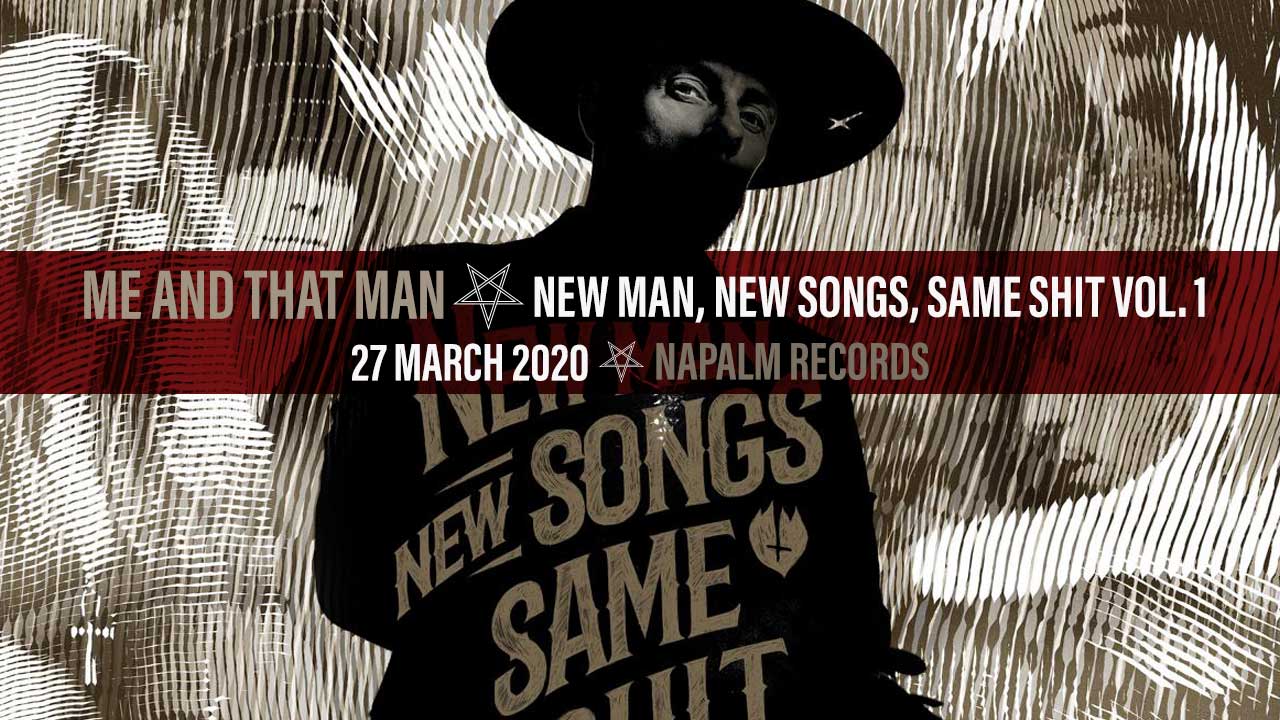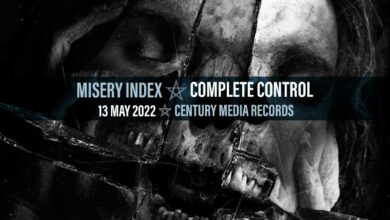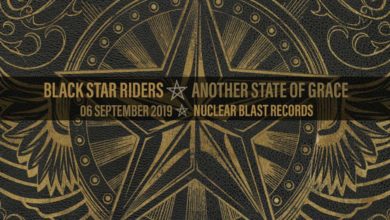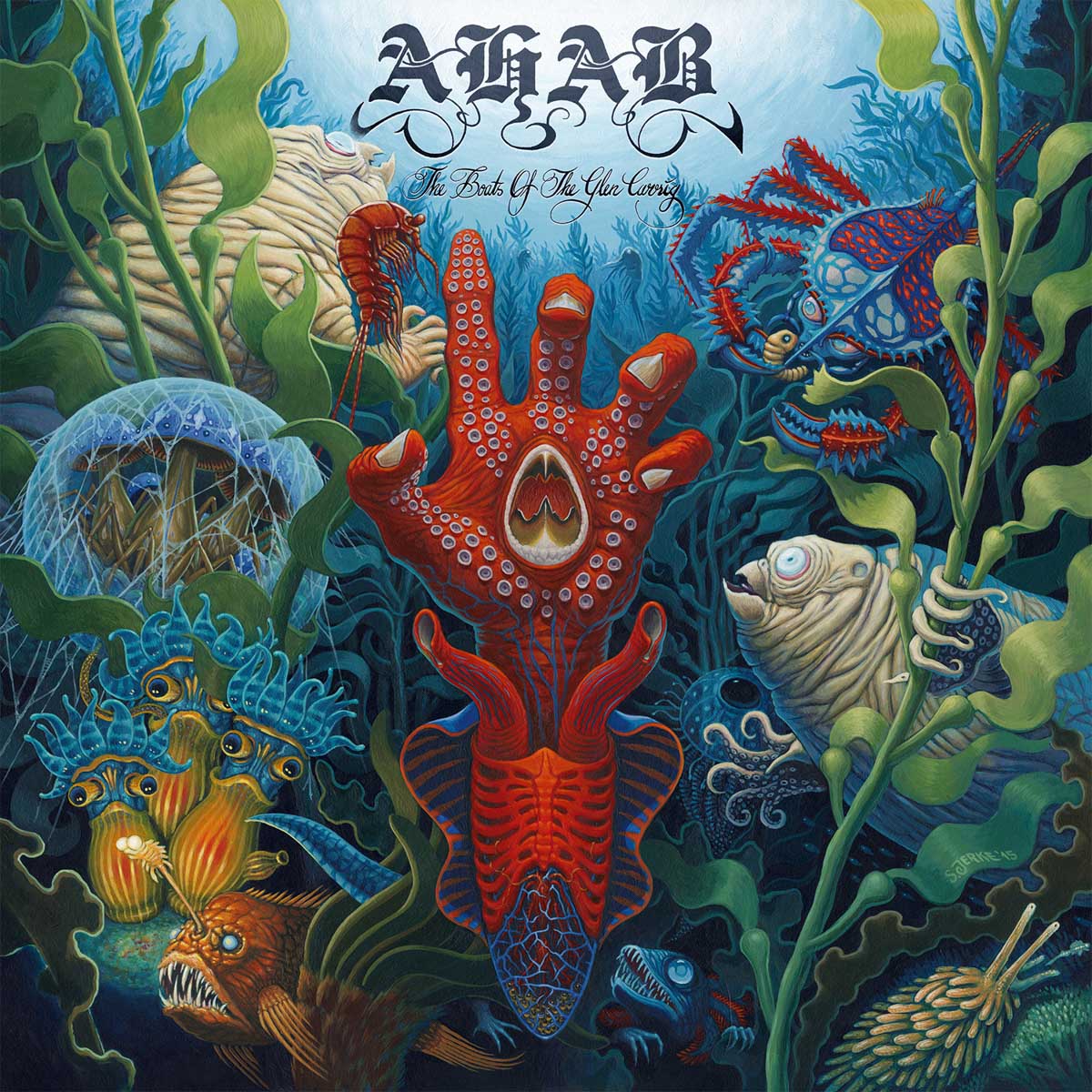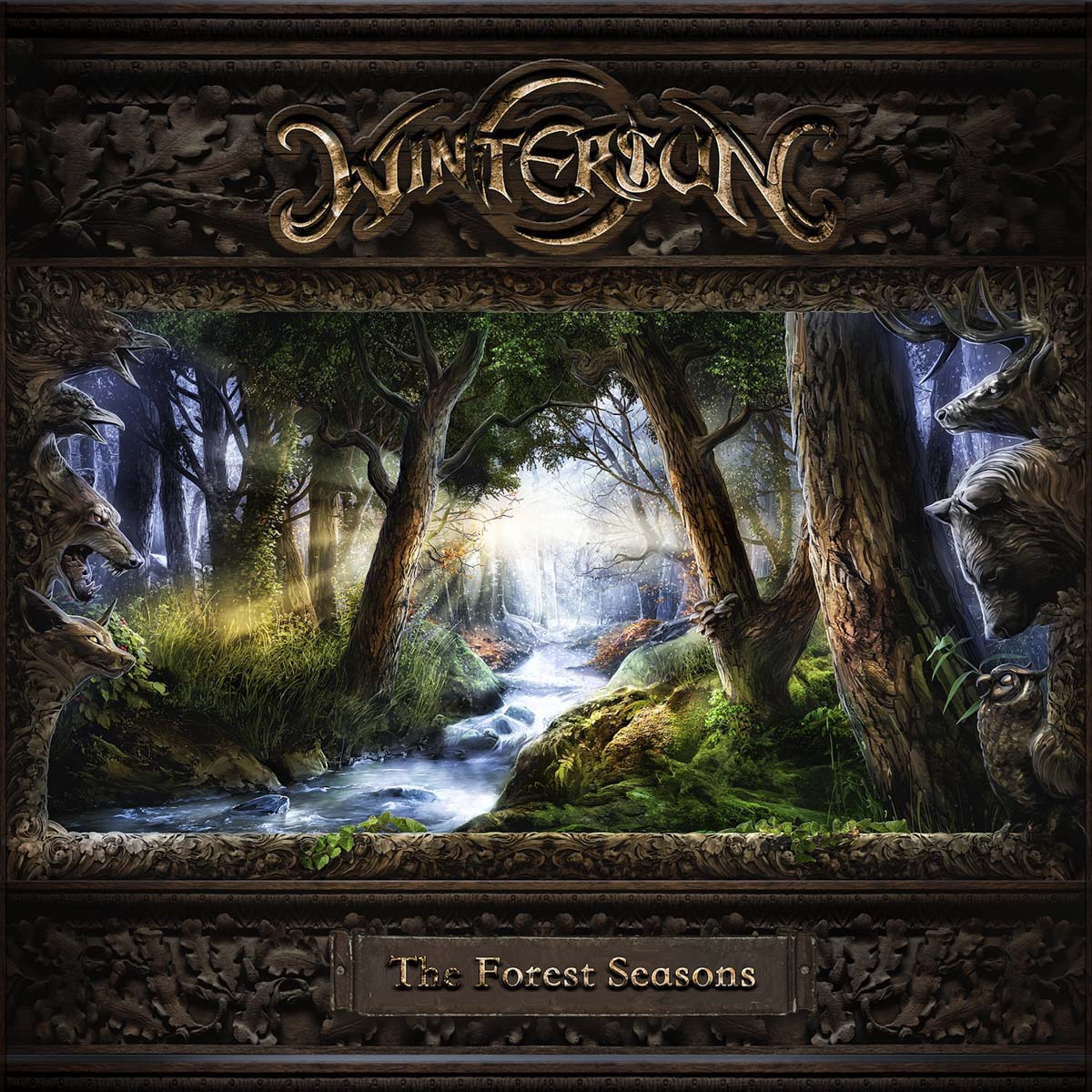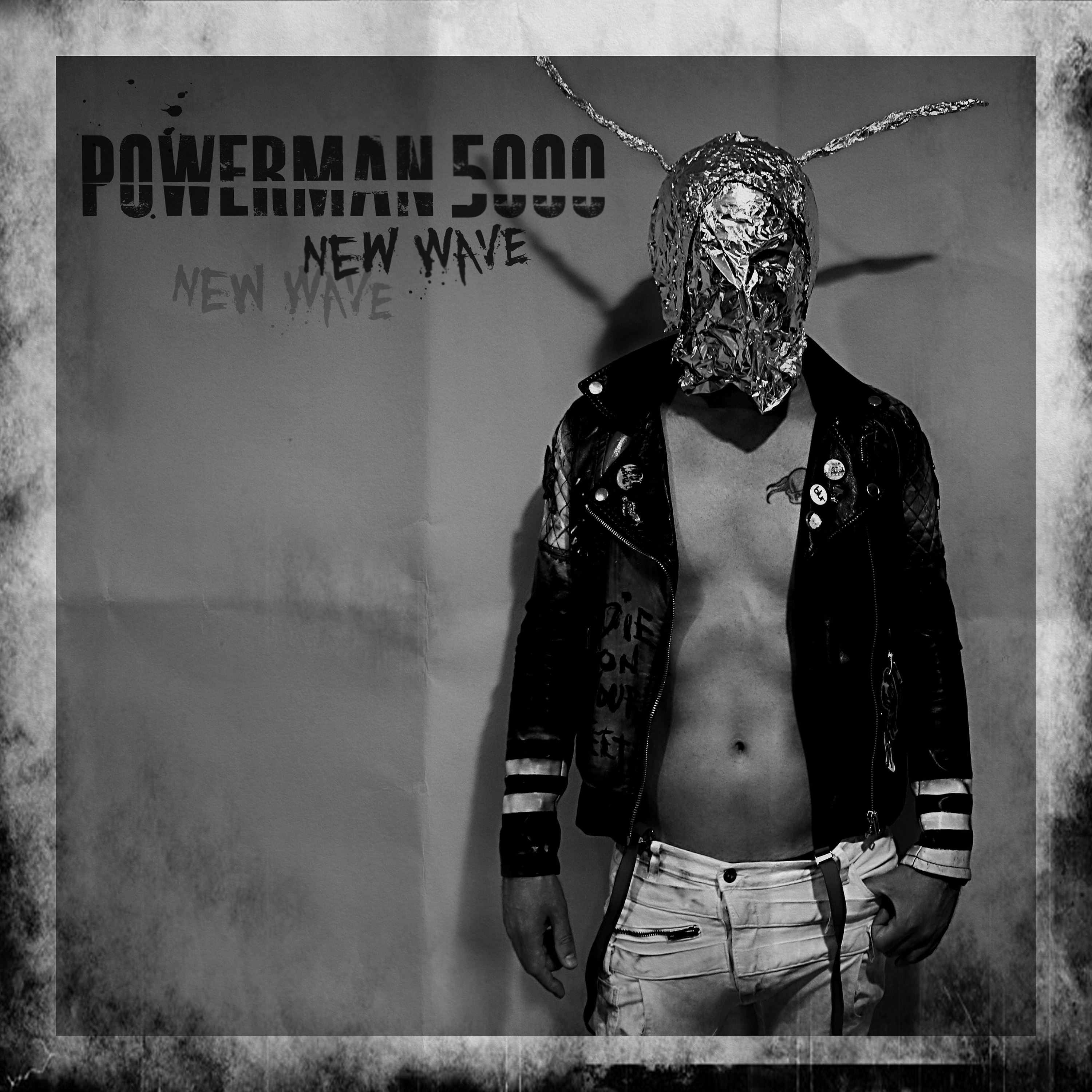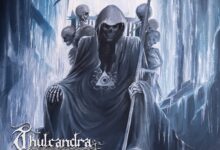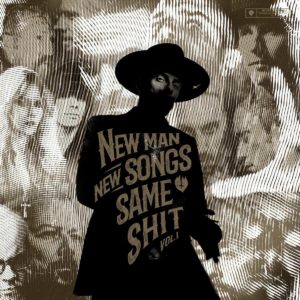 Two decades ago, I would not have been able to contemplate how huge Behemoth has become nor do I imagine anyone else at the time able to predict such enormous success. Thelema.6 was my first exposure to the band and honestly, it did little to excite me though it certainly was not a “bad” record. In hindsight, the album pointed to what would become the Behemoth sound and thus is cast in a more favorable light than my initial assessment. The point is that Nergal is a driven, dedicated musician who is in constant preparation for achieving the goal envisioned within. His vision for Behemoth has flourished with a darkened manifest destiny. After all the years spent refining, and literally defining, what has come to be known as Blackened Death Metal, it is only natural for the man to seek a creative outlet for ideas that do not fit neatly under the Behemoth umbrella. Me and That Man is just such a project.
Two decades ago, I would not have been able to contemplate how huge Behemoth has become nor do I imagine anyone else at the time able to predict such enormous success. Thelema.6 was my first exposure to the band and honestly, it did little to excite me though it certainly was not a “bad” record. In hindsight, the album pointed to what would become the Behemoth sound and thus is cast in a more favorable light than my initial assessment. The point is that Nergal is a driven, dedicated musician who is in constant preparation for achieving the goal envisioned within. His vision for Behemoth has flourished with a darkened manifest destiny. After all the years spent refining, and literally defining, what has come to be known as Blackened Death Metal, it is only natural for the man to seek a creative outlet for ideas that do not fit neatly under the Behemoth umbrella. Me and That Man is just such a project.
Nergal formed Me and That Man with another guitarist by the name of John Porter seven years ago The two collaborated writing songs influenced by some of the most landmark artists of the Folk, Blues, and Country (of the Outlaw variety, not the mass-produced, dumbed-down, superficial Nashville variety) genres. Who would have guessed Nergal was such an avid fan of folks like Nick Cave, Mark Lanegan, and Townes Van Zandt? The pair completed a studio album, Songs of Love and Death, and released it in 2017. A year later, Porter was out of the band leaving Nergal as the sole torchbearer. In typical fashion, though, Nergal did not let this divert him from his path but instead forged on, rising to the occasion as is his track record, a significant dimension of his character. Now, he has cultivated a new collection of material titled New Man, New Songs, Same Shit Vol. 1 and over the course of eleven songs, collaborates with a veritable who’s who of musicians including everyone from Mat McNerney of Grave Pleasures, Matt Heafy of Trivium, Dead Soul, and many, many more.
The first track, “Run with the Devil,” features Jørgen Munkeby of Shining (NO) fame. While there is a very strong resemblance to perhaps the most annoying song of all time, “Blister in the Sun,” the Black Jazz influence of Munkeby’s group pervades including a wailing saxophone solo. After the dust clears from that first point of potential contention, “Coming Home” follows and is a much more palatable, less polarizing affair. Sivert Høyem of Madrugada lends his smooth baritone voice backed by a noticeably Stratocaster guitar sound. There is a classic air at work, one channeling the spirit of Springsteen in his pre-Pop years of relevance and the more earthy realm of Rock. “By the River,” the fourth track, is one of the most striking tracks on the album. A simple Blues lick is ornamented with hand-clapping and soulful vibes giving it a distinctly Gospel-influenced, traditional sound. Ihsahn, guitarist/vocalist of possibly the best Black Metal band of all time, Emperor, is featured on this song which is strangely curious with the aforementioned Gospel elements in the mix. What is most striking about this track is the flooring guitar solo which is a dizzying wah-effected exercise in sheer six-string expression.
There is a natural ebb and flow through the course of the album as the songs create palpable peaks and valleys in the atmosphere. The seventh track, “Deep Down South,” features Johanna Sadonis of Lucifer and Nicke Anderson also of Lucifer and Entombed. This track is based on a shuffling Bluegrass type of banjo lick and were it to play in a random dive bar in Nashville, no one would be the wiser to who was actually playing. Despite not being a fan of anything Corey Taylor has done musically, “How Come?” the tenth track, is a scenario where his talent truly shines. Aided by Brent Hinds of Mastodon and Rob Caggiano from Volbeat, the song has a driving appeal with its alternate take on Americana. The line “blow your trumpets Gabriel” is an Easter egg of sorts referencing the Behemoth song. Again, an emotive, fluid guitar solo is included, one that does not overstay its welcome. Perhaps the most striking song on the record is the final track, “Confession,” with Niklas Kvarforth of Shining (SE). His gravelly vocals perfectly compliment the Nick Cave-inspired Murder Folk displayed here. Interestingly, there is also the inclusion of a blast beat toward the end, the perfect send-off for a record playing to the other side of Nergal’s musical personality.
This is the album to play for the elitist snob in your life who constantly criticizes Death Metal and its surrounding culture. Indeed, this is an album that will resonate with any music lover for it is pure, undiluted, and soul-baring. While it may shock some to include Nergal in the same sentence as folks like Leonard Cohen or Tom Waits, it makes a lot of sense in a different light. Throughout the album, roots-oriented music is given the Nergal treatment as he ties his fervently anti-religious themes to traditional songs. It works. There is an inherent honesty within, a lost innocence, and a fearless desire to mine the darkness that permeates society. Ultimately, it is quite the achievement and hopefully will expose fans to a broader realm of music that, despite lacking “heaviness,” elaborates the current of rebellion, the pursuit of truth, and overall world view espoused by the man. By tying such seemingly disparate genres together, Nergal is showing that Metal does not necessarily hold the patent on the devil for after all, has there ever been a lyric more viscerally infernal that shooting a man in Reno just to watch him die?

